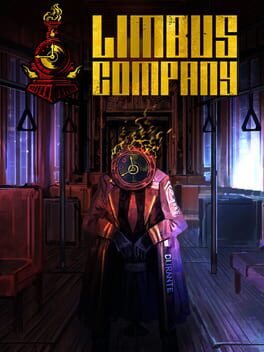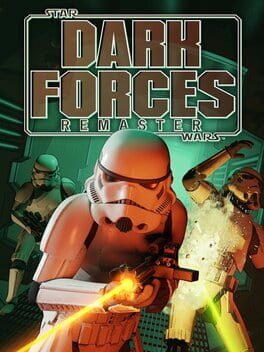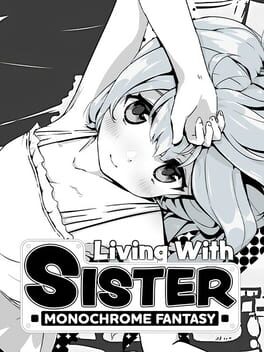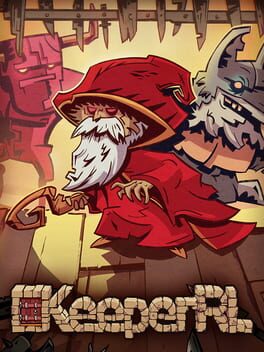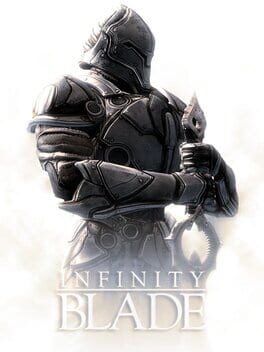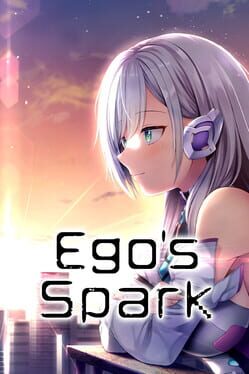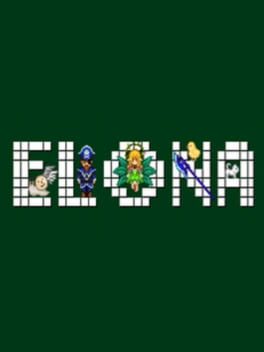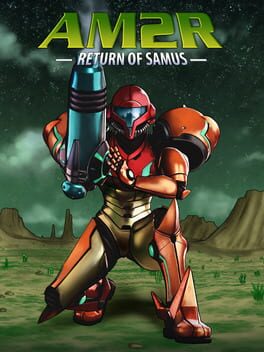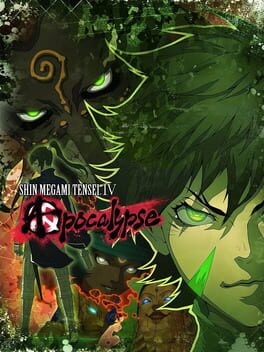Trapezohedron
2007
Don't get me wrong. Osu! is convenient and also very powerful. It has all the tools you need to emulate the gameplay experiences of a BEMANI game, the Ouendan! games, and the Taiko no Tatsujin games.
There is technically nothing wrong with this game barring the dated and curious UI.
However, the issue lies in the community itself. Osu, being community driven and sometimes toxic, can mostly be ignored. Mostly, because their thumbprints are all over the songs that are out on the market.
There's no manual of style or consistency for this game, and as such, the schizophrenic difficulty tends to be your undoing. A 3-star chart may be chill with proper rhythm beats and sensible jumps for Osu!, or it could be a notespam with leaps that should have been considered 6-7 star on an official release.
8-10 star charts are very inconsistent, with them just adding 16th notes everywhere without consideration for consistency.
As such, the community limits the amount of enjoyable gameplay one can glean from Osu!.
If nothing else, make sure to grab ranked charts; despite the gripes, you can't really go wrong with this game given it's free.
There is technically nothing wrong with this game barring the dated and curious UI.
However, the issue lies in the community itself. Osu, being community driven and sometimes toxic, can mostly be ignored. Mostly, because their thumbprints are all over the songs that are out on the market.
There's no manual of style or consistency for this game, and as such, the schizophrenic difficulty tends to be your undoing. A 3-star chart may be chill with proper rhythm beats and sensible jumps for Osu!, or it could be a notespam with leaps that should have been considered 6-7 star on an official release.
8-10 star charts are very inconsistent, with them just adding 16th notes everywhere without consideration for consistency.
As such, the community limits the amount of enjoyable gameplay one can glean from Osu!.
If nothing else, make sure to grab ranked charts; despite the gripes, you can't really go wrong with this game given it's free.
TBD
What is better: to be born good or to overcome your evil nature through great effort?
I open up with a relevant Paarthurnax quotation because this, at the heart of everything, is what Pronant Symphony is summarized into.
Pronant Symphony is a WolfRPG HJRPG Metroidvania that's actually a well-done JRPG in and of itself, with many systems being well-thought of and boasting a meaningful morality system that's rather difficult to maintain.
In this game, you are Julius, an Alv pretending to be a powerful Demon Lord. In reality, barring the ability of Pronant, Alvs are even weaker than humans. To this end, you 'involuntarily enlist' the help of four sisters, reputed and skilled adventurers whose help you will use to power yourself up and defeat the Archdemon Ishtaroth, the creator of the domination spell Pronant.
Very early on, the game emphasizes you sticking to a moral path of your own preference. The Good path has one or two unavoidable H-Scenes (This is an H JRPG after all), and the Evil path has the brunt of the scenes. Despite this disparity, the game does not have a drought of content for both paths, and your character's motivations either way is well-justified, a rarity in games where morality feels like an afterthought.
The actual gameplay itself is a standard JRPG in the format of SMT and Pokémon, with both skills being learned from weapons and having to be trained in order to increase their charges. Interestingly, MP becomes a secondary HP resource; running out of MP or HP will cause your characters to faint.
Status effects are mildly useful, and weaknesses to status effects are defined by creature race. There are rare interactions where an enemy mob may not actually attack you, but will ask to be spared or perhaps they will sell items to you.
It's also possible to stack status buffs to incredible effect.
On the map, navigation is done inside Pandemonium, a curious dungeon of various locales with towns sporadically distributed on the floors. The game rewards back-tracking and paying attention, since there are many hint items or additional dungeons you can visit, on top of using your psychic powers to either steal, glean information, or just spend untold hours talking until time passes.
The story itself leans more closely to character interactions than the overall lore or plot; there is mention of an old war between the divinities and the demons that don't factor in much to your current predicament except providing some background why the entire dungeon exists.
In your party is of course the four sisters that were mentioned:
- Jueli, the Ranger that for all intents and purposes is a thief that doesn't steal, and who likes to drink;
- Serafina, the Saint that plays the role of healer and holy-offensive magic caster obsessed with beauty and make-up;
- Irito, the Demonslayer far too committed to heroics and training, somehow still seeing the goodness inside our hero's soul and depending on the route may be right,
- Niva, the Witch and youngest of the four, who wants nothing more but to laze around, but also study the darkest arts.
Much ado is discussed about how your power is controlling them and how they feel about you is basically fake. Still, despite this, you can opt to do right by them, despite the fact that you're manipulating them to kill the Archdemon for you.
Whether or not this bears fruit depends on the path you walk, and the good path is very precarious with one potential mistake breaking your run.
Keep in mind that it's not only important to simply be virtuous; you must do whatever you can to ensure the girls aren't scarred by your actions. Or, you can throw this away and just do whatever you want; the game doesn't particularly judge you for it as you're given adequate options on how you want to play the game.
In terms of cons, the game can be a bit grindy, with the initial grind for Archdemon Crystals and skill charges being the most prominent, but there's auto mode and coins of blessing to alleviate most issues.
The game also vastly prefers Irito, to which I have no objections with, but this means that everyone else barring the MC is basically a secondary character.
In terms of HCG quality, Tefun's art is high-quality, but there are no uncensors of the art even on the English release, and the HCG is static with no moans (only squelches), and vastly relegated to the Evil route. Even then, the variety is a bit too low for a game being advertised primarily as a porn game on DLSite.
Still, if you're anything like me, you probably stopped tickling your pickle around 1/3rd through the game.
If you like your JRPGs mildly-grindy but with wonderful character interaction, this is a worthy visit. Bonus points for being practically being developed by 1 person (2 or 3 if you count the artists and the royalty-free music).
It's thanks to the story's format that it can actually deliver on what it sets out to do.
I open up with a relevant Paarthurnax quotation because this, at the heart of everything, is what Pronant Symphony is summarized into.
Pronant Symphony is a WolfRPG HJRPG Metroidvania that's actually a well-done JRPG in and of itself, with many systems being well-thought of and boasting a meaningful morality system that's rather difficult to maintain.
In this game, you are Julius, an Alv pretending to be a powerful Demon Lord. In reality, barring the ability of Pronant, Alvs are even weaker than humans. To this end, you 'involuntarily enlist' the help of four sisters, reputed and skilled adventurers whose help you will use to power yourself up and defeat the Archdemon Ishtaroth, the creator of the domination spell Pronant.
Very early on, the game emphasizes you sticking to a moral path of your own preference. The Good path has one or two unavoidable H-Scenes (This is an H JRPG after all), and the Evil path has the brunt of the scenes. Despite this disparity, the game does not have a drought of content for both paths, and your character's motivations either way is well-justified, a rarity in games where morality feels like an afterthought.
The actual gameplay itself is a standard JRPG in the format of SMT and Pokémon, with both skills being learned from weapons and having to be trained in order to increase their charges. Interestingly, MP becomes a secondary HP resource; running out of MP or HP will cause your characters to faint.
Status effects are mildly useful, and weaknesses to status effects are defined by creature race. There are rare interactions where an enemy mob may not actually attack you, but will ask to be spared or perhaps they will sell items to you.
It's also possible to stack status buffs to incredible effect.
On the map, navigation is done inside Pandemonium, a curious dungeon of various locales with towns sporadically distributed on the floors. The game rewards back-tracking and paying attention, since there are many hint items or additional dungeons you can visit, on top of using your psychic powers to either steal, glean information, or just spend untold hours talking until time passes.
The story itself leans more closely to character interactions than the overall lore or plot; there is mention of an old war between the divinities and the demons that don't factor in much to your current predicament except providing some background why the entire dungeon exists.
In your party is of course the four sisters that were mentioned:
- Jueli, the Ranger that for all intents and purposes is a thief that doesn't steal, and who likes to drink;
- Serafina, the Saint that plays the role of healer and holy-offensive magic caster obsessed with beauty and make-up;
- Irito, the Demonslayer far too committed to heroics and training, somehow still seeing the goodness inside our hero's soul and depending on the route may be right,
- Niva, the Witch and youngest of the four, who wants nothing more but to laze around, but also study the darkest arts.
Much ado is discussed about how your power is controlling them and how they feel about you is basically fake. Still, despite this, you can opt to do right by them, despite the fact that you're manipulating them to kill the Archdemon for you.
Whether or not this bears fruit depends on the path you walk, and the good path is very precarious with one potential mistake breaking your run.
Keep in mind that it's not only important to simply be virtuous; you must do whatever you can to ensure the girls aren't scarred by your actions. Or, you can throw this away and just do whatever you want; the game doesn't particularly judge you for it as you're given adequate options on how you want to play the game.
In terms of cons, the game can be a bit grindy, with the initial grind for Archdemon Crystals and skill charges being the most prominent, but there's auto mode and coins of blessing to alleviate most issues.
The game also vastly prefers Irito, to which I have no objections with, but this means that everyone else barring the MC is basically a secondary character.
In terms of HCG quality, Tefun's art is high-quality, but there are no uncensors of the art even on the English release, and the HCG is static with no moans (only squelches), and vastly relegated to the Evil route. Even then, the variety is a bit too low for a game being advertised primarily as a porn game on DLSite.
Still, if you're anything like me, you probably stopped tickling your pickle around 1/3rd through the game.
If you like your JRPGs mildly-grindy but with wonderful character interaction, this is a worthy visit. Bonus points for being practically being developed by 1 person (2 or 3 if you count the artists and the royalty-free music).
It's thanks to the story's format that it can actually deliver on what it sets out to do.
2023
Echoing the thoughts of some people here, I wish indeed this was a normal game. The game -- and the series, really, has a great foundation in its lore where the weird becomes commonplace and the weird is lethal. Oftentimes you might ask why the City operates in this way, but the game often does not explain it to its surprising benefit.
This is no different in Limbus, though given that you're actually managing a bunch of low-tier misfits now with little experience compared to a washed up Fixer in the previous game, things that seemed incredibly easy to the previous game's characters are lorewise pretty tough here.
I will say outright that I ditched the game during the tutorial due to some amount of confusion and dislike of the presentation of the game.
You start out with a system where you have to line up actions and they will carry out those actions seamlessly. Compared to the previous game's manually assigning which Dice would clash with another enemy's dice, this is much, much quicker to execute. Unfortunately, it seems that it in effect has made it much harder for you to view who's clashing with what, not helped by the standard gacha tutorials restricting the actions you can carry out
Further exacerbating the issue is that if you're playing on the phone, some important icons are stacked on top of icons, making it hard to see, and the game is reliant on being able to perceive colors in order to see which sin types are resonating with which action you're performing.
The game also requires multiple keypresses in order to view a character's skillset, having to do it one by one per character if you want to see what your team member does.
All in all, this does not make for a good first impression and an unpleasant experience, which is a shame because the plot is great here; Dante (the Main Character) is a defined 'loser' that has to earn the trust of the people under his command, and the City still remains as oppressive as ever.
Will I pick it up and deal with it? Maybe; not likely, even if someone told me if I did the same on the Rats in the previous game (no, I didn't; but I did use a mod that gave me 99 copies of a page after burning a book), but I think it's too much an ask if the official game can't even provide tutorials (in normal Project Moon style) instead with people referring newcomers to a certain youtube channel's guides (which to be fair does not go too in-depth to the point it can't be understood by newcomers) in order to understand the basics.
Also, the phone version... just works(tm). It was fantastic that after I tabbed out, the game just froze and won't respond. I think I see why people recommend playing this on the PC, what with its miniscule UI being suited for bigger screens, and... that.
But I don't like playing gacha games of any form on the PC. And it's still a bit too much to ask people to wade through confusing content before they arrive at something peak, though I have no doubt that Project Moon can, and has already gotten to that point.
This is no different in Limbus, though given that you're actually managing a bunch of low-tier misfits now with little experience compared to a washed up Fixer in the previous game, things that seemed incredibly easy to the previous game's characters are lorewise pretty tough here.
I will say outright that I ditched the game during the tutorial due to some amount of confusion and dislike of the presentation of the game.
You start out with a system where you have to line up actions and they will carry out those actions seamlessly. Compared to the previous game's manually assigning which Dice would clash with another enemy's dice, this is much, much quicker to execute. Unfortunately, it seems that it in effect has made it much harder for you to view who's clashing with what, not helped by the standard gacha tutorials restricting the actions you can carry out
Further exacerbating the issue is that if you're playing on the phone, some important icons are stacked on top of icons, making it hard to see, and the game is reliant on being able to perceive colors in order to see which sin types are resonating with which action you're performing.
The game also requires multiple keypresses in order to view a character's skillset, having to do it one by one per character if you want to see what your team member does.
All in all, this does not make for a good first impression and an unpleasant experience, which is a shame because the plot is great here; Dante (the Main Character) is a defined 'loser' that has to earn the trust of the people under his command, and the City still remains as oppressive as ever.
Will I pick it up and deal with it? Maybe; not likely, even if someone told me if I did the same on the Rats in the previous game (no, I didn't; but I did use a mod that gave me 99 copies of a page after burning a book), but I think it's too much an ask if the official game can't even provide tutorials (in normal Project Moon style) instead with people referring newcomers to a certain youtube channel's guides (which to be fair does not go too in-depth to the point it can't be understood by newcomers) in order to understand the basics.
Also, the phone version... just works(tm). It was fantastic that after I tabbed out, the game just froze and won't respond. I think I see why people recommend playing this on the PC, what with its miniscule UI being suited for bigger screens, and... that.
But I don't like playing gacha games of any form on the PC. And it's still a bit too much to ask people to wade through confusing content before they arrive at something peak, though I have no doubt that Project Moon can, and has already gotten to that point.
2023
ΔV: Rings of Saturn is a small, somewhat obscure space game that prides itself with its constant but gradual update schedule and focus on simulated physics.
Set in a hard sci-fi universe, you are a nameless, faceless space miner with basically zero involvement in the setting.
As a non-entity, what you can do is hire crews who will spice up your life to an extent by giving you other things to do while mining, and trying to get used to the fact that in space, unless an opposing force pushes you the other way, you aren't decelerating naturally.
Each ship you use in ΔV is unique in the sense that the models actually differ from each other, as each one has their own strengths and weaknesses.
The starter ship you have is easily the game's best all-rounder which can get your feet wet and do everything you may want to do in the dead of space.
Yet, each ship can be refitted with custom parts from the market and further tuned in order to make the ship as close as to your preferred playstyle as possible.
But with all this amount of customization unheard of games similar to Sunless Seas / Skies, the game does not handhold you on many of its mechanics. The most you're going to get are the intro tutorials you get when starting your first New Game run, and the loading screen hints.
Everything else is rather obtuse but if you figure out the logic, can be intuitive. Flying backwards is a valid technique even the AI uses. There's nothing wrong with flying with your reactor facing the rock, because you can slam that booster if in case you need to get to escape velocity.
The game however is still lacking on the story things to do, since they're at the mercy of the RNG and some events can get worryingly repetitive, when a crewmember greets another, this is especially evident.
Still, unlike Sunless Seas or Skies, this is more playable than either in my opinion given that the game does give you options to curb the supply issue.
Set in a hard sci-fi universe, you are a nameless, faceless space miner with basically zero involvement in the setting.
As a non-entity, what you can do is hire crews who will spice up your life to an extent by giving you other things to do while mining, and trying to get used to the fact that in space, unless an opposing force pushes you the other way, you aren't decelerating naturally.
Each ship you use in ΔV is unique in the sense that the models actually differ from each other, as each one has their own strengths and weaknesses.
The starter ship you have is easily the game's best all-rounder which can get your feet wet and do everything you may want to do in the dead of space.
Yet, each ship can be refitted with custom parts from the market and further tuned in order to make the ship as close as to your preferred playstyle as possible.
But with all this amount of customization unheard of games similar to Sunless Seas / Skies, the game does not handhold you on many of its mechanics. The most you're going to get are the intro tutorials you get when starting your first New Game run, and the loading screen hints.
Everything else is rather obtuse but if you figure out the logic, can be intuitive. Flying backwards is a valid technique even the AI uses. There's nothing wrong with flying with your reactor facing the rock, because you can slam that booster if in case you need to get to escape velocity.
The game however is still lacking on the story things to do, since they're at the mercy of the RNG and some events can get worryingly repetitive, when a crewmember greets another, this is especially evident.
Still, unlike Sunless Seas or Skies, this is more playable than either in my opinion given that the game does give you options to curb the supply issue.
I should say that in terms of Remaster quality, this is pretty up there.
It attempts to make it so that the game is compatible with modern devices, without shaking up its identity. This means you get enhanced graphics (or a means to disable all enhancements so you can play it in all of its antiquated glory back in 1995!) and features a lot of bonus in-the-making material, including a special level that was used as a demo back in the day.
This is basically a Nostalgia Nerd's wet dream, because you can pick and choose which and when you want enhancements to play with the game.
However, the game itself is starting to show its rough edges if you're spoiled with the conveniences of the modern era.
The level design is questionable; rooms existing for the sake of having rooms, weapon balance being very easy to deal with since most enemies can be dealt with the basic Bryar pistol or the blaster. Jumping puzzles exist, and are a novel invention of the game, since they never existed for games like these until Quake started turning it into a rocket jump artform.
Later stages don't provide you much to go with, as some rooms are ostensibly locked and it's not until you bother to check your items in your inventory that you realize the keycode is there instead of Doom's intuitive keycard system.
In fact, some stages have walls and pathways that tend not to make sense in terms of progression, leaving you groping around walls to find where you need to go.
The latter point is what made me unfortunately shelve the game.
If you can stomach the arcane limitations of its time and age, then by all means, please go ahead and play this wonderful remaster. If you need something more intuitive, I think you're better off playing Doom 2, Quake or Half Life.
It attempts to make it so that the game is compatible with modern devices, without shaking up its identity. This means you get enhanced graphics (or a means to disable all enhancements so you can play it in all of its antiquated glory back in 1995!) and features a lot of bonus in-the-making material, including a special level that was used as a demo back in the day.
This is basically a Nostalgia Nerd's wet dream, because you can pick and choose which and when you want enhancements to play with the game.
However, the game itself is starting to show its rough edges if you're spoiled with the conveniences of the modern era.
The level design is questionable; rooms existing for the sake of having rooms, weapon balance being very easy to deal with since most enemies can be dealt with the basic Bryar pistol or the blaster. Jumping puzzles exist, and are a novel invention of the game, since they never existed for games like these until Quake started turning it into a rocket jump artform.
Later stages don't provide you much to go with, as some rooms are ostensibly locked and it's not until you bother to check your items in your inventory that you realize the keycode is there instead of Doom's intuitive keycard system.
In fact, some stages have walls and pathways that tend not to make sense in terms of progression, leaving you groping around walls to find where you need to go.
The latter point is what made me unfortunately shelve the game.
If you can stomach the arcane limitations of its time and age, then by all means, please go ahead and play this wonderful remaster. If you need something more intuitive, I think you're better off playing Doom 2, Quake or Half Life.
This is one of the... ahem, quintessential doujin cohabitation games. Quite a few of them on a certain website follow its formula to a tee.
Why? Because it just works.
You play as Onii-chan, the elder brother of the little sister you dote on. Sickly and frail as she is, you are tasked to take care of her. Part and parcel for such kinds of games, if you have certain patches installed, which you should, you'll be doing more than just taking care of her.
Unfortunately, for the sensitive or those who have been affected by it, this does have contents of SA, of the sleeping kind. Your options are rather varied and there are multiple positions for you, but the game deliberately uses no Live2d, to match with its manga aesthetic.
This is not a game for the prudish nor for the morally-inclined.
Beyond that, there's a surprising amount of activities to do with a basic plot involving you trying to save your guild and an adventure subplot where you go with your sister to distant places to seek a more-permanent solution to her predicament.
It's not too fast, nor is it too slow, but if your... festering needs requires buildups and you're fine with the beautiful Manga aesthetic, this can suitably help with your... requirements.
Note the Official English version, while having some slightly questionable translations (what even is Blow on?), has a better sentence flow which actually makes the thing worth reading this time around.
Why? Because it just works.
You play as Onii-chan, the elder brother of the little sister you dote on. Sickly and frail as she is, you are tasked to take care of her. Part and parcel for such kinds of games, if you have certain patches installed, which you should, you'll be doing more than just taking care of her.
Unfortunately, for the sensitive or those who have been affected by it, this does have contents of SA, of the sleeping kind. Your options are rather varied and there are multiple positions for you, but the game deliberately uses no Live2d, to match with its manga aesthetic.
This is not a game for the prudish nor for the morally-inclined.
Beyond that, there's a surprising amount of activities to do with a basic plot involving you trying to save your guild and an adventure subplot where you go with your sister to distant places to seek a more-permanent solution to her predicament.
It's not too fast, nor is it too slow, but if your... festering needs requires buildups and you're fine with the beautiful Manga aesthetic, this can suitably help with your... requirements.
Note the Official English version, while having some slightly questionable translations (what even is Blow on?), has a better sentence flow which actually makes the thing worth reading this time around.
2015
I've always been coming back to this game for some reason. It's a cute, simple colony-builder with a focus on creating a base for you and your minions to reside in and then subsequently raiding others. Repeat ad infinitum until all is dead and you become super powerful.
At its core, it is a perfectly-functional game that has somehow attained a good balance in both roguelike elements and in colony management.
However, it's lacking in both departments all the same to entice someone to play the game in the long-term.
Simple unit AI makes raiding high-level settlements a chore, and a lack of certain types of furniture makes the game hard to recommend for colony designers, because quite a bit of things are lacking, and for those that exist, they're purely on a functional basis.
The game's QoL is lacking. The game knows how to find all items in a stockpile, but the fact that there is no 'inventory' menu is daunting, especially when many mobs hobble their way to your repository to appropriate gear before you can assign them.
Quite frankly this becomes a logistical nightmare at later stages of the game.
The game having permadeath encourages you to finding a secondary character to act as your dungeon navigator. You could use your Keeper, but if you die, the game's gone forever (unless you force-quit by ALT+F4).
The latest update eschews most balancing in terms of snowballing in favor of other settlements upping in the difficulty curve the farther they are from your home settlement. Existence of a z-level feature is undermined by the lack of things to do in your colony.
There are performance issues as you reach 50+ units, and when you breach many, many Z-Levels downward.
Thankfully, mods exist as a good way to change up the gameplay, or augment it.
All my gripes being said, it should be noted that KeeperRL is interesting that it is one among a small list of single-developer games that managed to successfully reach a 1.0 release, so props to Michal for actually managing to do this.
Note that if you decide to mod the game yourself, the license for the tileset the game uses, which is under Oryx Design Labs, requires you to buy a $5.00 USD tileset before you're able to use derivatives on it, non-extensible.
At its core, it is a perfectly-functional game that has somehow attained a good balance in both roguelike elements and in colony management.
However, it's lacking in both departments all the same to entice someone to play the game in the long-term.
Simple unit AI makes raiding high-level settlements a chore, and a lack of certain types of furniture makes the game hard to recommend for colony designers, because quite a bit of things are lacking, and for those that exist, they're purely on a functional basis.
The game's QoL is lacking. The game knows how to find all items in a stockpile, but the fact that there is no 'inventory' menu is daunting, especially when many mobs hobble their way to your repository to appropriate gear before you can assign them.
Quite frankly this becomes a logistical nightmare at later stages of the game.
The game having permadeath encourages you to finding a secondary character to act as your dungeon navigator. You could use your Keeper, but if you die, the game's gone forever (unless you force-quit by ALT+F4).
The latest update eschews most balancing in terms of snowballing in favor of other settlements upping in the difficulty curve the farther they are from your home settlement. Existence of a z-level feature is undermined by the lack of things to do in your colony.
There are performance issues as you reach 50+ units, and when you breach many, many Z-Levels downward.
Thankfully, mods exist as a good way to change up the gameplay, or augment it.
All my gripes being said, it should be noted that KeeperRL is interesting that it is one among a small list of single-developer games that managed to successfully reach a 1.0 release, so props to Michal for actually managing to do this.
Note that if you decide to mod the game yourself, the license for the tileset the game uses, which is under Oryx Design Labs, requires you to buy a $5.00 USD tileset before you're able to use derivatives on it, non-extensible.
2010
PC port of this game can be found here: https://archive.org/details/infinity-blade-pc
Yes, I copied the most-recent description from the most-recent review here, but it needs to be said enough that subsequent reviews for this game, if played on the PC, should indicate this.
Amazing just how much secrets this game actually had that I wasn't able to discover until this came by as a fan's stealth PC release. Didn't know about the negative bloodlines back then and how it could actually speed up your grinding by a few weeks ahead of time.
Still, despite being the premier game that defined the iPhone's appeal and power at the time, it is certainly aging a little bit poorly. Game's much easier to play when you're not fat-fingering it on the phone, but all the same beyond upgrading your stats, the gameplay loop doesn't change.
One part sniping away coin bags and health potions, one part swiping the screen looking for alternate paths on the longest road to the God King, and the last one being a punch-out game fighting against 3 enemy types beside the God King and his Dark Knight, that's all the gameplay you'll get. The numbers and difficulty may change but the core is always static. Well, the PC version's free, so why not play it anyway? It's a meditative experience that you can just plop anywhere and stop at any time.
Yes, I copied the most-recent description from the most-recent review here, but it needs to be said enough that subsequent reviews for this game, if played on the PC, should indicate this.
Amazing just how much secrets this game actually had that I wasn't able to discover until this came by as a fan's stealth PC release. Didn't know about the negative bloodlines back then and how it could actually speed up your grinding by a few weeks ahead of time.
Still, despite being the premier game that defined the iPhone's appeal and power at the time, it is certainly aging a little bit poorly. Game's much easier to play when you're not fat-fingering it on the phone, but all the same beyond upgrading your stats, the gameplay loop doesn't change.
One part sniping away coin bags and health potions, one part swiping the screen looking for alternate paths on the longest road to the God King, and the last one being a punch-out game fighting against 3 enemy types beside the God King and his Dark Knight, that's all the gameplay you'll get. The numbers and difficulty may change but the core is always static. Well, the PC version's free, so why not play it anyway? It's a meditative experience that you can just plop anywhere and stop at any time.
2011
Portal 2 is when you have a higher budget and you want to make a sequel for the game, but eventually realize Steam is a much better revenue funnel than making games so you kind of ditch the scene after making The Orange Box.
It's a really good game with more sensible puzzles, but the puzzles have a habit of railroading you where you need to go by way of walls being more restricted.
There's at least 3 setpieces here. Broken Aperture Science, old Aperture Science and BREAKING DOWN Aperture science, which can provide some unique experiences with how you deal and solve room puzzles.
It's a good game overall, but well, it's more of the same with a more humorous jaunt.
It's a really good game with more sensible puzzles, but the puzzles have a habit of railroading you where you need to go by way of walls being more restricted.
There's at least 3 setpieces here. Broken Aperture Science, old Aperture Science and BREAKING DOWN Aperture science, which can provide some unique experiences with how you deal and solve room puzzles.
It's a good game overall, but well, it's more of the same with a more humorous jaunt.
TBD
This VN released February 20 on Steam.
A kinetic novel of the Nukige (lewd-focused) Slice of Life genre, it tries to present multiple themes and the first few lines start out really strong in trying to establish its characters, but eventually falls rather flat after immediately contradicting the very thing both characters hate doing: doing the nasty deed.
E-5, the latest prototype from Erect Electronics' lineup of glorified mechanized blow-up dolls escapes from the lab she belongs as she absolutely disliked her intended purpose.
Our protagonist, Hajime 'Daigoro' Honda, meanwhile was a former ace host who wooed many women thanks to his good looks which he isn't afraid to flaunt, or rather, was, until a good turn had gone bad and he could barely afford his living expenses.
Thanks to a few contrivances, both characters meet on horrible terms and enter a contract, where it seems outlined both will simply have to live with each other platonically. But the contract requires a kiss, and given the genre of the VN, it doesn't take too long for things to escalate.
The themes it attempts to tackle are ultimately very weak. You'd think that a story with the name Ego's Spark would discuss how they arrived at that anomalous self-identity. In this case however, the Ego was already budding at that point which in turn caused the heroine to escape the lab in the first place, and instead grows as she goes onwards with her cohabitation with the protagonist.
The good thing about the story is that the heroine has an acerbic wit. The art is also not bad, and Kiba Satoshi once again delivers (and is my reason for grabbing this game ngl). Everything else is unfortunately middling, and there isn't much to glean from the story except some feels, and perhaps some pointers on how to write an understanding heroine protagonist while trying to also simultaneously make them almost sadistically abusive with their language.
Basically, the story can't make up its mind on whether it wants to be fluffy slice of life, nukige, or nakige.
It's not something I would recommend other people not already familiar with visual novels to play.
A kinetic novel of the Nukige (lewd-focused) Slice of Life genre, it tries to present multiple themes and the first few lines start out really strong in trying to establish its characters, but eventually falls rather flat after immediately contradicting the very thing both characters hate doing: doing the nasty deed.
E-5, the latest prototype from Erect Electronics' lineup of glorified mechanized blow-up dolls escapes from the lab she belongs as she absolutely disliked her intended purpose.
Our protagonist, Hajime 'Daigoro' Honda, meanwhile was a former ace host who wooed many women thanks to his good looks which he isn't afraid to flaunt, or rather, was, until a good turn had gone bad and he could barely afford his living expenses.
Thanks to a few contrivances, both characters meet on horrible terms and enter a contract, where it seems outlined both will simply have to live with each other platonically. But the contract requires a kiss, and given the genre of the VN, it doesn't take too long for things to escalate.
The themes it attempts to tackle are ultimately very weak. You'd think that a story with the name Ego's Spark would discuss how they arrived at that anomalous self-identity. In this case however, the Ego was already budding at that point which in turn caused the heroine to escape the lab in the first place, and instead grows as she goes onwards with her cohabitation with the protagonist.
The good thing about the story is that the heroine has an acerbic wit. The art is also not bad, and Kiba Satoshi once again delivers (and is my reason for grabbing this game ngl). Everything else is unfortunately middling, and there isn't much to glean from the story except some feels, and perhaps some pointers on how to write an understanding heroine protagonist while trying to also simultaneously make them almost sadistically abusive with their language.
Basically, the story can't make up its mind on whether it wants to be fluffy slice of life, nukige, or nakige.
It's not something I would recommend other people not already familiar with visual novels to play.
2007
People call this game a quasi-roguelike, and even on the Roguelike Reddit community, this is almost always never referred to as a real roguelike.
I find that an oddity, given that the gameplay, barring its slice-of-life additions, vastly resembles contemporaries like NetHack and its core inspiration, ADoM.
In any case, don't let those people fool you, this game is as much a Roguelike as the ancient contemporaries are, if you cared about the Berlin Interpretation anyway.
But I digress, you're here for a summary.
Elona is a quirky Japanese roguelike with an emphasis on the slice of life aspects of gameplay, and can feel rather unfinished if you're playing on the Vanilla version.
On the onset of the game, you're already provided a brief tutorial on basic controls that encourages you to eat something. There's a corpse of a beggar somewhere, so your natural inclination is to eat him, right? The game mocks you for this, but it also provides a handy warning that you'll encounter weird things as you go.
The game is particularly grindy, and if you're lost, it's very easy to lose stats and hard to gain them back. Many players give up on the game thanks to this fact. If you last long enough though, you'll end up owning a castle, have a bunch of storage spaces, and even sell goods as well as have a farm to grow plants in. Said locations are areas you can decorate, and adventurers come and go to visit you. You can also marry your pet, which is a choice of a dog, a bear, and a... little girl.
Yeah, the game is weird and in today's climes highly-questionable. Actually, you can marry both characters of your gender and in fact, marry abominations like a Shub-Niggurath which is a random enemy here.
For whatever reason, the game landed on a winning formula, and as such, it has a following on both EN and JP communities, with the JP community developing 2 branches of a variant, which includes: Elona+ and Elona OOMSESTepNC.
Elona+ is the quirkier, yet more-straightforward of the two. The game attempts to provide proper progression, but it doubles down on weird things, such as adding a peeing mechanic and getting characters or yourself wet with pee. Then you die thanks to being wet doubling the amount of damage you get from lightning.
Elona OOMSESTepNC is the other variant that's popular in EN side. This is actually just a mod-mod of a mod-mod, but is most often recommended everywhere for those not wanting to play Plus thanks to better English support and tons of quality of life features in it.
Omake Overhaul Modify Sukutu Edition South Tyris Step Nasuko Custom as it is known when you expand the abbreviation excels in doing what the Omake variants did: expanding existing features and making the whole existing experience more hollistic.
The lategame of this variant gets ridiculous, when attaining 2000 stat (where there is a cap) is just a mere pebble of progress in the game, you know that the game gets incredibly ridiculous with its Disgaea-tier power levels.
In order to beat its endgame, you will quite literally have to become a God ingame, which translates to infinite wishes and armor that grants you invulnerability, which will not save you in the final dungeon given certain enemies can bypass it.
All in all, Elona is a wonderful roguelike if you're not offended by the weirder things in Japan and are willing to put in the time to learn the system and its meta. As a classic roguelike, doing about anything requires multiple keypresses.
I find that an oddity, given that the gameplay, barring its slice-of-life additions, vastly resembles contemporaries like NetHack and its core inspiration, ADoM.
In any case, don't let those people fool you, this game is as much a Roguelike as the ancient contemporaries are, if you cared about the Berlin Interpretation anyway.
But I digress, you're here for a summary.
Elona is a quirky Japanese roguelike with an emphasis on the slice of life aspects of gameplay, and can feel rather unfinished if you're playing on the Vanilla version.
On the onset of the game, you're already provided a brief tutorial on basic controls that encourages you to eat something. There's a corpse of a beggar somewhere, so your natural inclination is to eat him, right? The game mocks you for this, but it also provides a handy warning that you'll encounter weird things as you go.
The game is particularly grindy, and if you're lost, it's very easy to lose stats and hard to gain them back. Many players give up on the game thanks to this fact. If you last long enough though, you'll end up owning a castle, have a bunch of storage spaces, and even sell goods as well as have a farm to grow plants in. Said locations are areas you can decorate, and adventurers come and go to visit you. You can also marry your pet, which is a choice of a dog, a bear, and a... little girl.
Yeah, the game is weird and in today's climes highly-questionable. Actually, you can marry both characters of your gender and in fact, marry abominations like a Shub-Niggurath which is a random enemy here.
For whatever reason, the game landed on a winning formula, and as such, it has a following on both EN and JP communities, with the JP community developing 2 branches of a variant, which includes: Elona+ and Elona OOMSESTepNC.
Elona+ is the quirkier, yet more-straightforward of the two. The game attempts to provide proper progression, but it doubles down on weird things, such as adding a peeing mechanic and getting characters or yourself wet with pee. Then you die thanks to being wet doubling the amount of damage you get from lightning.
Elona OOMSESTepNC is the other variant that's popular in EN side. This is actually just a mod-mod of a mod-mod, but is most often recommended everywhere for those not wanting to play Plus thanks to better English support and tons of quality of life features in it.
Omake Overhaul Modify Sukutu Edition South Tyris Step Nasuko Custom as it is known when you expand the abbreviation excels in doing what the Omake variants did: expanding existing features and making the whole existing experience more hollistic.
The lategame of this variant gets ridiculous, when attaining 2000 stat (where there is a cap) is just a mere pebble of progress in the game, you know that the game gets incredibly ridiculous with its Disgaea-tier power levels.
In order to beat its endgame, you will quite literally have to become a God ingame, which translates to infinite wishes and armor that grants you invulnerability, which will not save you in the final dungeon given certain enemies can bypass it.
All in all, Elona is a wonderful roguelike if you're not offended by the weirder things in Japan and are willing to put in the time to learn the system and its meta. As a classic roguelike, doing about anything requires multiple keypresses.
This game is to Metroid like how Project Wingman is to Ace Combat.
For those unfamiliar with the comparison, basically, this fangame is about as close as you can get to an official original formula Metroid game that isn't Metroid Dread (back then, Dread didn't exist so this basically was the only thing you could play that would scratch the itch, barring replaying Super Metroid again and again).
It takes the considerably linear Metroid 2 and turns it into a Metroid Fusion and Metroid Zero Mission-esque experience with its own twists and inspirations from Super.
Interestingly, the actual official Metroid 2 Remake: Metroid Samus Returns was developed in parallel to this fangame. Both games have some conceptual overlap, including the part where there are story logs of a recent expedition in the setting, and the prominence of Chozo ruins properly tying the game to the series' mythology.
While Samus Returns is... considerably experimental, including an emphasis on melee counters which I found rather droll to deal with, AM2R capitalizes on the things that made side-scrolling Metroid games work: the run and gunplay and the secrets/puzzles.
Seriously, the quality of said puzzles including the mandatory Shinespark Gauntlet is something you would find in an official Metroid game.
Finding the game given the fact that Nintendo DMCA'd it is a bit of a trouble, but it's still out there if you know the right keywords to put in.
This is a game I highly recommend Metroid fans to take, but then again if you're reading this review, you likely already know and played this game to begin with.
For those unfamiliar with the comparison, basically, this fangame is about as close as you can get to an official original formula Metroid game that isn't Metroid Dread (back then, Dread didn't exist so this basically was the only thing you could play that would scratch the itch, barring replaying Super Metroid again and again).
It takes the considerably linear Metroid 2 and turns it into a Metroid Fusion and Metroid Zero Mission-esque experience with its own twists and inspirations from Super.
Interestingly, the actual official Metroid 2 Remake: Metroid Samus Returns was developed in parallel to this fangame. Both games have some conceptual overlap, including the part where there are story logs of a recent expedition in the setting, and the prominence of Chozo ruins properly tying the game to the series' mythology.
While Samus Returns is... considerably experimental, including an emphasis on melee counters which I found rather droll to deal with, AM2R capitalizes on the things that made side-scrolling Metroid games work: the run and gunplay and the secrets/puzzles.
Seriously, the quality of said puzzles including the mandatory Shinespark Gauntlet is something you would find in an official Metroid game.
Finding the game given the fact that Nintendo DMCA'd it is a bit of a trouble, but it's still out there if you know the right keywords to put in.
This is a game I highly recommend Metroid fans to take, but then again if you're reading this review, you likely already know and played this game to begin with.
SMT IV: Apocalypse improves on the game set by SMT IV in almost every way, excluding the story.
I have at least replayed this game over 5 times and grinded Matador to 999 stat, which while not hard, is utterly stressful given the amount of grinding you need to do to get around that stat level.
Playing as a poor kid who found a used, broken smartphone from a dead corpse, you soon become thrust into Tokyo's religiously-political factions and... wait I'm getting ahead of myself here.
You die first, and a god, pitying your poor excuse of an existence, offers you a second chance with one condition: You now serve under him.
Then you are thrust into the factions of the world, but are unable to join them ideologically thanks to your contract with the god who resurrected you. Instead, there are two routes in the game.
I should state that at a pivotal point in the game, if you're too inconsistent with your standing, as in you suddenly go for the other route when you qualify for the first route, you will lose all of your items as a punishment. It's a nice touch by the developers to ensure you're as consistent as can be.
Before I end up spoiling the rest of the game, here are the game's improvements, which were eventually carried on to Persona 5:
Smirking has been revamped. No longer do enemies become Speedy Gonzales once they smirk with you having little to no chance of hitting them, but instead Smirking provides guaranteed criticals and incentivizes their use by allowing skills to add additional effects if used while smirked. This can be a good thing for you or very bad if your enemy is smirking.
Two skills have been added to make this very core to the experience: Smile Charge, which grants you Smirk status at will, and Magaon, which removes Smirking status.
In a series where buffs are very important, this adds layers of complexity to the combat.
Estoma Sword is no longer Estoma Sword, but rather Estoma itself directly. It can be tapped in on the menu without going to your skills, and you don't need to hit enemies with it anymore. Pop in, and boom, repel encounters.
Dungeons, which were incredibly small in SMT IV, have been noticeably expanded in IVA. Of course, the small dungeons from the previous game still kind of exist, but new dungeons also fill that gap which are multi-layered.
Allies are also no longer suicidally stupid. Instead, they're just stupid in terms of not being able to properly coordinate with you. Allies will no longer use attacks that enemies block or repel, and it might seem like a cheat, but you will appreciate it given you no longer have a Walter equivalent casting Agi on Minotaur.
The Final Boss is awesome in that you're tested in as much as you know the game's inner workings, and a DLC superboss is the same take, but stronger.
----
There are parts where the game is weak however.
The game is focused on bonds and friendship. This weakens the general theme of the SMT series, but it's not so bad that you'll want to ignore the game and throw it on a Mexican trashheap never to be found alongside the many cartridges of ET buried with it.
The final dungeon is labyrinthine with its multiple stratums and teleporters, and by god the walking is painful. Even worse, you can't negotiate with the denizens inside that dungeon due to plot reasons.
Some AI allies are better than others, the worst of which is a certain spearman who will regularly steal press turns to attack enemies who may resist Physical attacks.
And the DLCs? Yeah, they exist, and most of them exist to make your character obscenely OP from the get-go.
It's not a perfect game, then again nothing is, but it's as close to one and I wish they would remake this game for the PC too.
I have at least replayed this game over 5 times and grinded Matador to 999 stat, which while not hard, is utterly stressful given the amount of grinding you need to do to get around that stat level.
Playing as a poor kid who found a used, broken smartphone from a dead corpse, you soon become thrust into Tokyo's religiously-political factions and... wait I'm getting ahead of myself here.
You die first, and a god, pitying your poor excuse of an existence, offers you a second chance with one condition: You now serve under him.
Then you are thrust into the factions of the world, but are unable to join them ideologically thanks to your contract with the god who resurrected you. Instead, there are two routes in the game.
I should state that at a pivotal point in the game, if you're too inconsistent with your standing, as in you suddenly go for the other route when you qualify for the first route, you will lose all of your items as a punishment. It's a nice touch by the developers to ensure you're as consistent as can be.
Before I end up spoiling the rest of the game, here are the game's improvements, which were eventually carried on to Persona 5:
Smirking has been revamped. No longer do enemies become Speedy Gonzales once they smirk with you having little to no chance of hitting them, but instead Smirking provides guaranteed criticals and incentivizes their use by allowing skills to add additional effects if used while smirked. This can be a good thing for you or very bad if your enemy is smirking.
Two skills have been added to make this very core to the experience: Smile Charge, which grants you Smirk status at will, and Magaon, which removes Smirking status.
In a series where buffs are very important, this adds layers of complexity to the combat.
Estoma Sword is no longer Estoma Sword, but rather Estoma itself directly. It can be tapped in on the menu without going to your skills, and you don't need to hit enemies with it anymore. Pop in, and boom, repel encounters.
Dungeons, which were incredibly small in SMT IV, have been noticeably expanded in IVA. Of course, the small dungeons from the previous game still kind of exist, but new dungeons also fill that gap which are multi-layered.
Allies are also no longer suicidally stupid. Instead, they're just stupid in terms of not being able to properly coordinate with you. Allies will no longer use attacks that enemies block or repel, and it might seem like a cheat, but you will appreciate it given you no longer have a Walter equivalent casting Agi on Minotaur.
The Final Boss is awesome in that you're tested in as much as you know the game's inner workings, and a DLC superboss is the same take, but stronger.
----
There are parts where the game is weak however.
The game is focused on bonds and friendship. This weakens the general theme of the SMT series, but it's not so bad that you'll want to ignore the game and throw it on a Mexican trashheap never to be found alongside the many cartridges of ET buried with it.
The final dungeon is labyrinthine with its multiple stratums and teleporters, and by god the walking is painful. Even worse, you can't negotiate with the denizens inside that dungeon due to plot reasons.
Some AI allies are better than others, the worst of which is a certain spearman who will regularly steal press turns to attack enemies who may resist Physical attacks.
And the DLCs? Yeah, they exist, and most of them exist to make your character obscenely OP from the get-go.
It's not a perfect game, then again nothing is, but it's as close to one and I wish they would remake this game for the PC too.
2022
I'll say it first here: Elden Ring isn't perfect. Quite a bit of bosses are repeated and lategame exploration involves a lot of riding around and looking around things that are simply just more boluses instead of weapons that would make you feel excited.
But Elden Ring is a mastercraft of challenging fights that ease you into the gameplay; the game isn't truly hard at the beginning, but it gets harder than even Dark Souls III once the going gets tough.
It challenges you and provides you with a final exam to face all of your lessons with your knowledge.
There were times I asked myself, what if I could face the Dark Souls enemies without starting an NG+ loop all over?
Elden Ring has that, and for some that's a hit or miss, but for me I like it, given that I can fight the bosses I had difficulties with, and face them with my newfound skills without having to wait for the game to roll the credits over.
It also costs only an average AAA game's price, for a game that has a boatload of content. And for that reason, is why Elden Ring is easily my best of the best game ever.
But Elden Ring is a mastercraft of challenging fights that ease you into the gameplay; the game isn't truly hard at the beginning, but it gets harder than even Dark Souls III once the going gets tough.
It challenges you and provides you with a final exam to face all of your lessons with your knowledge.
There were times I asked myself, what if I could face the Dark Souls enemies without starting an NG+ loop all over?
Elden Ring has that, and for some that's a hit or miss, but for me I like it, given that I can fight the bosses I had difficulties with, and face them with my newfound skills without having to wait for the game to roll the credits over.
It also costs only an average AAA game's price, for a game that has a boatload of content. And for that reason, is why Elden Ring is easily my best of the best game ever.
Vampire Survivors, but free and the characters distinct. A later update added Holo House, a game mode I don't much care for.
Thanks to the fact that unlike in Vampire Survivors who start out with a predefined loadout you can randomly chance on as a character, in Holocure, each character has their own weapon which you can invest in and each weapon operates differently. You have Mumei and her homing feathers when they hit a target. You have Kronii who uses her clock swords to stab at the nearest enemy (and another one to stab at a random enemy).
The game falls apart at high level play, because the game is much easier when you ditch all the other weapon slots to limit rng and just invest in your starter weapon, plus a few combos which provide you heals or enemy slowdown.
Some combos are actively detrimental versus their base weapons too.
Then again, for the price of free, the game is incredibly polished. You won't lose anything but your time if you play this game.
Thanks to the fact that unlike in Vampire Survivors who start out with a predefined loadout you can randomly chance on as a character, in Holocure, each character has their own weapon which you can invest in and each weapon operates differently. You have Mumei and her homing feathers when they hit a target. You have Kronii who uses her clock swords to stab at the nearest enemy (and another one to stab at a random enemy).
The game falls apart at high level play, because the game is much easier when you ditch all the other weapon slots to limit rng and just invest in your starter weapon, plus a few combos which provide you heals or enemy slowdown.
Some combos are actively detrimental versus their base weapons too.
Then again, for the price of free, the game is incredibly polished. You won't lose anything but your time if you play this game.


